The information that follows was written by Dr. Mike Petrik, also known as Mike, The Chicken Vet, who is a doctor of veterinary medicine with a masters degree in animal welfare. There is no one more qualified to guide backyard chicken keepers through this difficult subject and I am grateful for his thoughtfulness and sensitive treatment of such a difficult topic for our benefit.
Dr. Mike Petrik, DVM, MSc
"This is a post I have been wanting to write for a long time, but hesitant to take on. I have done a lot of work with the professional poultry producers in the past couple years, teaching the best euthanasia techniques and procedures. It is possibly the biggest contribution I will make in my career to animal welfare. I believe that it is part of the responsibility of any animal owner to reduce the suffering of any animal in their care, and euthanasia is an important part of that. I have also been asked by many of you for advice, and have seen a lot of questionable things floating around on the internet.
One thing I will never do is tell an owner when it is appropriate to euthanize. You need to make that decision based on your values, ethics and experience. I have my opinion of whether it is humane to try to set a broken leg on a chicken and try to get her to recover. You have your opinion. Both of our opinions are based on how we compute pain endured versus the value of extending a life. As long as we both consider the situation and make the decision based on the welfare of the animal, we are both right. Of course, we are both wrong as well. Nobody, regardless of experience, ever euthanizes at the perfect time….we do our best and have to live with the decisions.
Euthanasia definitely does not have to be a "do it yourself" process. Veterinarians will euthanize birds in most cases….often they do not feel comfortable diagnosing or treating, but will still perform this important service. If the cost, distance or circumstances preclude you using a vet's services, I would far rather see you do the job properly yourself than botch something as important and emotional as this.
Now, some general information about euthanasia. I consider these facts and have spent a lot of time and study convincing myself of these truths:
- Euthanasia is an effective tool in improving the welfare of an individual or group of animals.
- Euthanasia is more often performed too late, rather than too early. More birds suffer needlessly because their keepers aren't willing to perform the job than suffer a needless early death.
- Euthanasia is NOT about making a bird dead. The crucial part is making the bird unconscious quickly. I can soak a bird in kerosene, and light it on fire…..it will always end up dead, but this is not euthanasia. Once a bird cannot feel pain or fear, the method used to kill the body is almost irrelevant, for the bird's welfare.The "appetizing" factor in any method of euthanasia is not relevant to the bird's welfare. If the bird bleeds, or goes through convulsions, or the act looks violent, the method may still be very humane. The "yuck" factor is an important component of the effect on the "doer," and this is something to take into consideration, but doesn't necessarily affect the well-being of the bird.
- Treating an animal with respect will always result in better welfare for both the animal and yourself. If you are doing the best technique you can, and making decisions based on what is best for the bird, you can feel good about what you do.
With these truths in mind, I am going to describe two methods of euthanasia for backyard poultry keepers to consider. They should be appropriate for the vast majority of people who raise chickens on a small scale. I will describe them in gory detail, and will tell you how they work and why they are humane. There are other methods that are humane….I have chosen the most accessible methods that I think will be most useful for small flock owners. If you are squeamish, you may want to stop reading now.
CERVICAL DISLOCATION
Cervical dislocation is humane, if done properly. The benefits of this method are that it can be done immediately after identifying that a bird should be euthanized and needs no tools. It causes unconsciousness in around 40 seconds after being applied and is very repeatable …that is, it works every time it is done properly. The way cervical dislocation causes unconsciousness is by stretching the neck, dislocating the joint at the base of the skull. This causes the spinal cord (which is very elastic) to snap and the resulting recoil causes brain damage and unconsciousness through concussion. It causes death by breaking the blood vessels (carotid arteries and jugular veins) so that the brain runs out of oxygen.
Cervical dislocation is not effective if the dislocation occurs far down the neck, if the neck isn't stretched lengthwise ("breaking the neck" doesn't make the bird unconscious….it will die, after several minutes), or if bones are crushed in the process. Spinning the bird (referred to sometimes as the "helicopter" method) is unacceptable, and the "broomstick" method is questionable, depending on technique….if you put too much weight on the broomstick, or stand on it too long, you are causing unnecessary pain and discomfort.
The technique that works best, and is recommended by veterinarians and welfare associations is as follows:
Grasp the bird by the head, either between the two fingers of the dominant hand, or by the thumb and first finger around the neck.
Tilt the bird's head well back, so it points towards the tail of the bird (this position aligns the joints so that it is much easier to dislocate the head from the neck).
Firmly push the head away from your body until you feel the head separate (you will definitely feel the joint let go). Pinch just behind the head to ensure that the head has separated from the neck. You will feel a definite gap, and it will feel like there are 2 layers of skin between your fingers. The bird will convulse and go into spasms….this is normal, and results from the loss of central control over the muscles. The movements do NOT mean the bird is conscious or suffering. Always ensure that the euthanasia has been effective by monitoring the bird until after convulsions stop and you can observe lack of breathing and that you cannot hear a heartbeat, either by listening to the chest with a stethoscope (if you have one), or by placing your ear against the birds chest.
Decapitation
Decapitation is an effective, humane method of dispatching a suffering animal. It is not instantaneous, but very quick, with unconsciousness usually occurring within 15-20 seconds. Unconsciousness occurs when the head is removed, and the Cerebral Spinal Fluid (CSF) escapes from the cut spinal cord. CSF is a fluid that acts to keep the brain and spinal cord "floating" inside the skull and spine…..by letting this escape, the brain will come in contact with the skull, causing concussion and unconsciousness.
Obviously, death will follow because of loss of blood flow to the brain. An important factor in this method is that the head must be completely removed. Cutting the major vessels and bleeding the bird out is not humane. Yes….the backyard slaughter method used by many small flock owners is NOT acceptable. If you cut all the blood vessels in the neck, the bird will stay conscious until the oxygen in the brain runs out…..3-4 minutes later. It is called exsanguination (or "bleeding"), and is identified as an unacceptable method of killing a bird by the AVMA (American Veterinary Medical Association). If you want to bleed a bird, (ie: for slaughter) you must make it unconscious first.
Other things to consider when euthanizing via decapitation are that the blades used must be sharp and the head must be removed in one cut. The blade, or the scissors must be large enough that one motion completely removes the head. Scissors are helpful as they improve human safety. Axes and knives work very well, but you must be careful! A stump with 2 nails driven in about an inch apart is a good way to hold the head safely, and cutting cones are very helpful to hold the bird still and keep your fingers away from the blade.
There are other humane methods that can be used, but for various reasons, I don't think are valuable to describe here. Blunt force trauma is very difficult to do properly, and emotionally disturbing for the person delivering the blow…..the odds of mis-hitting among people who rarely do it are too high for me to recommend it to you. But, in the hands of an experienced, effective operator, this method is extremely humane, despite the violence of the act. Carbon Dioxide gas, captive bolt devices, Low Atmospheric stunning, and electrocution are all humane, and you may hear of them, but need far too much equipment, are often too dangerous and need a lot of training to be done right. Any of these methods, done incorrectly, are inhumane.
Remember….euthanasia is not about making the bird die….it is about how they get there. I've heard of backyard poultry people drowning birds, poisoning them, freezing them and other methods that are not humane. I choose to believe that they didn't know of better methods, and hope this article helps.
One last point. Consider what your bird is going through as you are deciding when to euthanize. Remember that chickens hide pain, even severe pain, very well. It's important to realize that it takes a lot of discomfort for a bird to stop eating and act sick….hunched up in a corner of a coop. Very often, I feel that more suffering is caused by waiting too long to euthanize than even by people who euthanize incorrectly. It is part of your responsibility as an owner to care for your birds, and if her situation is painful and seems hopeless, it is time to start seriously considering euthanasia."
~Mike, The Chicken Vet
Dr. Petrik graduated from the Ontario Veterinary College in 1998 and began working as a mixed large animal veterinarian until 2000 when he began working as a laying hen veterinarian, a position he has held ever since. In 2013, he graduated from the University of Guelph with his Master of Science degree in Animal Welfare. Dr. Petrik has worked on the scientific committee for both the Canadian meat bird and Canadian laying hens Codes of Practice.Dr. Petrik grew up on a professional poultry farm with laying hens, broiler chickens, turkeys and layer pullets where he gained an appreciation of the day-to-day care of the birds and an understanding of how things work, or don't, in the real world. His family also raised pigs, beef cattle, and standard-bred race horses. In addition to his full time work as a poultry veterinarian, he plays hockey, teaches SCUBA diving, plays guitar, runs in obstacle races and has "2 awesome kids" that take up the rest of his spare time.
Follow Dr. Petrik on his blog, Mike, The Chicken Vet!
V případech mírné až středně těžké impotence je farmakologická lekarenjedna.com léčba poměrně účinná. Může však být spojena s nežádoucími účinky, jako jsou závratě, nevolnost, bolesti břicha, poruchy vidění atd.
Kathy Shea Mormino
Affectionately known internationally as The Chicken Chick®, Kathy Shea Mormino shares a fun-loving, informative style to raising backyard chickens. …Read on


shop my SPONSORS
The information that follows was written by Dr. Mike Petrik, also known as Mike, The Chicken Vet, who is a doctor of veterinary medicine with a masters degree in animal welfare. There is no one more qualified to guide backyard chicken keepers through this difficult subject and I am grateful for his thoughtfulness and sensitive treatment of such a difficult topic for our benefit.
Dr. Mike Petrik, DVM, MSc
"This is a post I have been wanting to write for a long time, but hesitant to take on. I have done a lot of work with the professional poultry producers in the past couple years, teaching the best euthanasia techniques and procedures. It is possibly the biggest contribution I will make in my career to animal welfare. I believe that it is part of the responsibility of any animal owner to reduce the suffering of any animal in their care, and euthanasia is an important part of that. I have also been asked by many of you for advice, and have seen a lot of questionable things floating around on the internet.
One thing I will never do is tell an owner when it is appropriate to euthanize. You need to make that decision based on your values, ethics and experience. I have my opinion of whether it is humane to try to set a broken leg on a chicken and try to get her to recover. You have your opinion. Both of our opinions are based on how we compute pain endured versus the value of extending a life. As long as we both consider the situation and make the decision based on the welfare of the animal, we are both right. Of course, we are both wrong as well. Nobody, regardless of experience, ever euthanizes at the perfect time….we do our best and have to live with the decisions.
Euthanasia definitely does not have to be a "do it yourself" process. Veterinarians will euthanize birds in most cases….often they do not feel comfortable diagnosing or treating, but will still perform this important service. If the cost, distance or circumstances preclude you using a vet's services, I would far rather see you do the job properly yourself than botch something as important and emotional as this.
Now, some general information about euthanasia. I consider these facts and have spent a lot of time and study convincing myself of these truths:
- Euthanasia is an effective tool in improving the welfare of an individual or group of animals.
- Euthanasia is more often performed too late, rather than too early. More birds suffer needlessly because their keepers aren't willing to perform the job than suffer a needless early death.
- Euthanasia is NOT about making a bird dead. The crucial part is making the bird unconscious quickly. I can soak a bird in kerosene, and light it on fire…..it will always end up dead, but this is not euthanasia. Once a bird cannot feel pain or fear, the method used to kill the body is almost irrelevant, for the bird's welfare.The "appetizing" factor in any method of euthanasia is not relevant to the bird's welfare. If the bird bleeds, or goes through convulsions, or the act looks violent, the method may still be very humane. The "yuck" factor is an important component of the effect on the "doer," and this is something to take into consideration, but doesn't necessarily affect the well-being of the bird.
- Treating an animal with respect will always result in better welfare for both the animal and yourself. If you are doing the best technique you can, and making decisions based on what is best for the bird, you can feel good about what you do.
With these truths in mind, I am going to describe two methods of euthanasia for backyard poultry keepers to consider. They should be appropriate for the vast majority of people who raise chickens on a small scale. I will describe them in gory detail, and will tell you how they work and why they are humane. There are other methods that are humane….I have chosen the most accessible methods that I think will be most useful for small flock owners. If you are squeamish, you may want to stop reading now.
CERVICAL DISLOCATION
Cervical dislocation is humane, if done properly. The benefits of this method are that it can be done immediately after identifying that a bird should be euthanized and needs no tools. It causes unconsciousness in around 40 seconds after being applied and is very repeatable …that is, it works every time it is done properly. The way cervical dislocation causes unconsciousness is by stretching the neck, dislocating the joint at the base of the skull. This causes the spinal cord (which is very elastic) to snap and the resulting recoil causes brain damage and unconsciousness through concussion. It causes death by breaking the blood vessels (carotid arteries and jugular veins) so that the brain runs out of oxygen.
Cervical dislocation is not effective if the dislocation occurs far down the neck, if the neck isn't stretched lengthwise ("breaking the neck" doesn't make the bird unconscious….it will die, after several minutes), or if bones are crushed in the process. Spinning the bird (referred to sometimes as the "helicopter" method) is unacceptable, and the "broomstick" method is questionable, depending on technique….if you put too much weight on the broomstick, or stand on it too long, you are causing unnecessary pain and discomfort.
The technique that works best, and is recommended by veterinarians and welfare associations is as follows:
Grasp the bird by the head, either between the two fingers of the dominant hand, or by the thumb and first finger around the neck.
Tilt the bird's head well back, so it points towards the tail of the bird (this position aligns the joints so that it is much easier to dislocate the head from the neck).
Firmly push the head away from your body until you feel the head separate (you will definitely feel the joint let go). Pinch just behind the head to ensure that the head has separated from the neck. You will feel a definite gap, and it will feel like there are 2 layers of skin between your fingers. The bird will convulse and go into spasms….this is normal, and results from the loss of central control over the muscles. The movements do NOT mean the bird is conscious or suffering. Always ensure that the euthanasia has been effective by monitoring the bird until after convulsions stop and you can observe lack of breathing and that you cannot hear a heartbeat, either by listening to the chest with a stethoscope (if you have one), or by placing your ear against the birds chest.
Decapitation
Decapitation is an effective, humane method of dispatching a suffering animal. It is not instantaneous, but very quick, with unconsciousness usually occurring within 15-20 seconds. Unconsciousness occurs when the head is removed, and the Cerebral Spinal Fluid (CSF) escapes from the cut spinal cord. CSF is a fluid that acts to keep the brain and spinal cord "floating" inside the skull and spine…..by letting this escape, the brain will come in contact with the skull, causing concussion and unconsciousness.
Obviously, death will follow because of loss of blood flow to the brain. An important factor in this method is that the head must be completely removed. Cutting the major vessels and bleeding the bird out is not humane. Yes….the backyard slaughter method used by many small flock owners is NOT acceptable. If you cut all the blood vessels in the neck, the bird will stay conscious until the oxygen in the brain runs out…..3-4 minutes later. It is called exsanguination (or "bleeding"), and is identified as an unacceptable method of killing a bird by the AVMA (American Veterinary Medical Association). If you want to bleed a bird, (ie: for slaughter) you must make it unconscious first.
Other things to consider when euthanizing via decapitation are that the blades used must be sharp and the head must be removed in one cut. The blade, or the scissors must be large enough that one motion completely removes the head. Scissors are helpful as they improve human safety. Axes and knives work very well, but you must be careful! A stump with 2 nails driven in about an inch apart is a good way to hold the head safely, and cutting cones are very helpful to hold the bird still and keep your fingers away from the blade.
There are other humane methods that can be used, but for various reasons, I don't think are valuable to describe here. Blunt force trauma is very difficult to do properly, and emotionally disturbing for the person delivering the blow…..the odds of mis-hitting among people who rarely do it are too high for me to recommend it to you. But, in the hands of an experienced, effective operator, this method is extremely humane, despite the violence of the act. Carbon Dioxide gas, captive bolt devices, Low Atmospheric stunning, and electrocution are all humane, and you may hear of them, but need far too much equipment, are often too dangerous and need a lot of training to be done right. Any of these methods, done incorrectly, are inhumane.
Remember….euthanasia is not about making the bird die….it is about how they get there. I've heard of backyard poultry people drowning birds, poisoning them, freezing them and other methods that are not humane. I choose to believe that they didn't know of better methods, and hope this article helps.
One last point. Consider what your bird is going through as you are deciding when to euthanize. Remember that chickens hide pain, even severe pain, very well. It's important to realize that it takes a lot of discomfort for a bird to stop eating and act sick….hunched up in a corner of a coop. Very often, I feel that more suffering is caused by waiting too long to euthanize than even by people who euthanize incorrectly. It is part of your responsibility as an owner to care for your birds, and if her situation is painful and seems hopeless, it is time to start seriously considering euthanasia."
~Mike, The Chicken Vet
Dr. Petrik graduated from the Ontario Veterinary College in 1998 and began working as a mixed large animal veterinarian until 2000 when he began working as a laying hen veterinarian, a position he has held ever since. In 2013, he graduated from the University of Guelph with his Master of Science degree in Animal Welfare. Dr. Petrik has worked on the scientific committee for both the Canadian meat bird and Canadian laying hens Codes of Practice.Dr. Petrik grew up on a professional poultry farm with laying hens, broiler chickens, turkeys and layer pullets where he gained an appreciation of the day-to-day care of the birds and an understanding of how things work, or don't, in the real world. His family also raised pigs, beef cattle, and standard-bred race horses. In addition to his full time work as a poultry veterinarian, he plays hockey, teaches SCUBA diving, plays guitar, runs in obstacle races and has "2 awesome kids" that take up the rest of his spare time.
Follow Dr. Petrik on his blog, Mike, The Chicken Vet!
V případech mírné až středně těžké impotence je farmakologická lekarenjedna.com léčba poměrně účinná. Může však být spojena s nežádoucími účinky, jako jsou závratě, nevolnost, bolesti břicha, poruchy vidění atd.



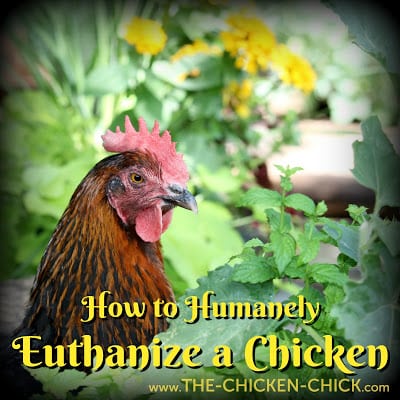



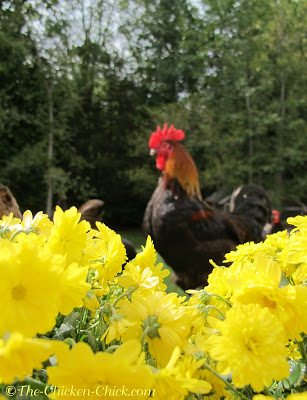
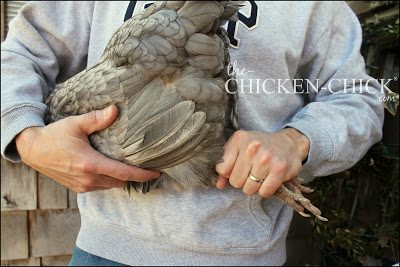
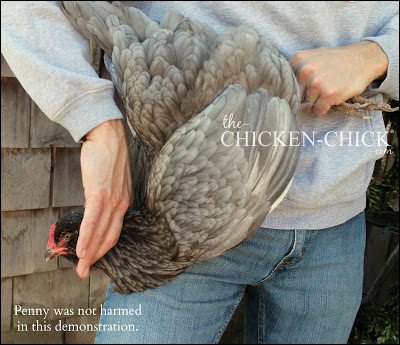
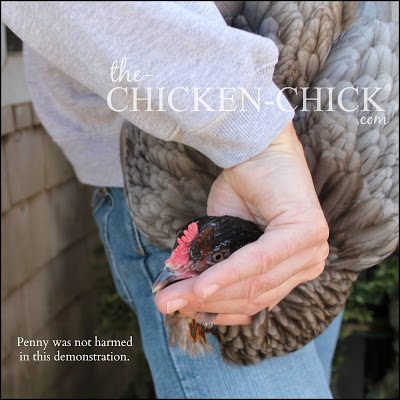
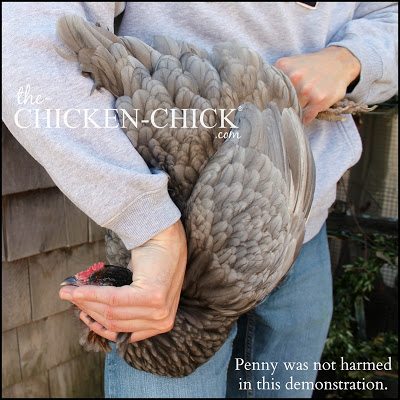

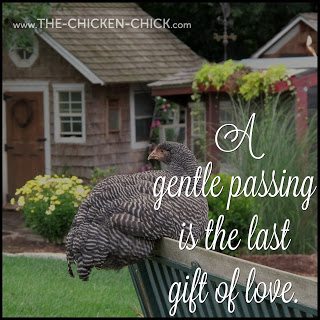























Thank you for this. It helped me know I was euthanizing my terribly injured chick as humanely as possible.
Thank you so much for this.
Thank you for this. I successfully euthanized Tutti just now thanks to your article. She is at peace.